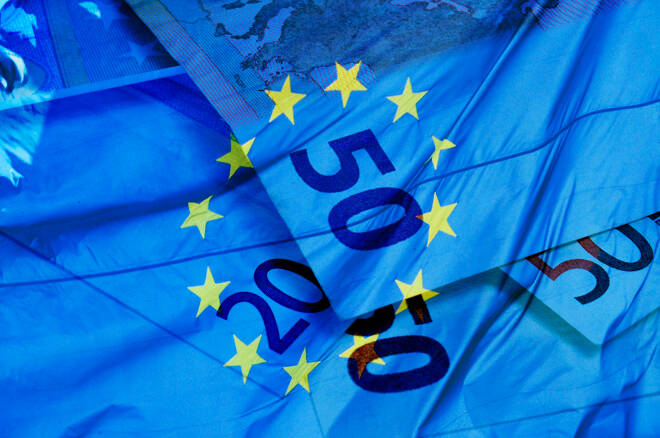Advertisement
Advertisement
Eurozone Trade Data and EU Economic Forecasts Weigh on the EUR
By:
The EUR gave up early gains this morning, with weaker growth forecasts and upward revisions to inflation forecasts doing the damage.
It was a relatively busy Eurozone economic calendar, with Eurozone trade data and EU Economic Forecast in focus this morning.
Eurozone Trade Disappoints
In March, the Eurozone’s trade deficit widened from €7.6 billion to €16.4 billion.
According to Eurostat,
- The exports of goods to the rest of the world were €250.1 billion, an increase of 14.0% compared with March 2021.
- Imports from the rest of the world stood at €266.5 billion, an increase of 35.4% compared with March 2021.
- The surge in imports stemmed from rising energy imports.
- In March 2021, the Eurozone had a trade surplus of €22.bn with the rest of the world.
- Intra-euro area trade rose by 21.2% to €236.8 billion in March 2022 compared with March 2021.
While the trade data disappointed, the EU Economic Forecasts drew greater interest this morning.
EU Revises Growth Forecasts Downwards from Winter 2022 Forecasts
For 2022, the European Commission forecasts growth of 2.7% and 2.3% for 2023. While the Commission revised both downwards, the 2022 revision was most marked.
In February, the European Commission forecast growth of 4.0% for 2022 and 2.7% for 2023.
The European Commission also made marked revisions to inflation forecasts.
For 2022, the Commission forecasts an annual rate of inflation of 6.1%, compared with 3.5% in the winter forecast. The Commission revised inflation for 2023 from 1.7% to 2.7%.
The European Commission cited the war in Ukraine as the key factor in the downward revisions to growth and upward revisions to inflation.
Market Impact
Ahead of today’s numbers, the EUR fell to a current-day low of $1.03892 before finding support.
In response to today’s stats and forecasts, the EUR rose to a post-stat and a current-day high of $1.04359 before falling to a post-stat low of $1.04196.
At the time of writing, the EUR was up by 0.10% to $1.04225.
Next Up
NY Empire State Manufacturing Index numbers from the US that should have a muted impact on the EUR.
FOMC member chatter will draw interest, however. FOMC member Williams is due to speak later today.
About the Author
Bob Masonauthor
With over 28 years of experience in the financial industry, Bob has worked with various global rating agencies and multinational banks. Currently he is covering currencies, commodities, alternative asset classes and global equities, focusing mostly on European and Asian markets.
Advertisement
